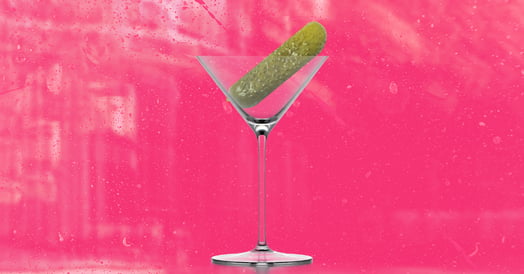Brands love April Fools’ Day more than the rest stuck groaning about bogus products no one wants, like an Olipop-Hidden Valley Ranch soda collab.

Many people profess their hatred of April Fools’ Day, so why do brands participate in it every year? And when does it pay off?
Brands love attention…
… and enough buzz can drive people to take real actions, like signing up for a trial.
- Duolingo and Carnival Cruise Line announced a five-year language cruise as a joke, but when you attempt to “book” it online, you’re offered a free month-long trial of Super Duolingo and a discount on a real cruise.
- BodyArmor’s prank was a Sports Performance Shampoo that led to a real sweepstakes for Stanley Cup tickets. BodyArmor is the NHL’s “official sports drink.”
And sometimes…
… people actually want the prank.
This year’s real April Fools’ products included Dbrand’s “Touch Grass” skins — essentially Astroturf for your devices — and GMK’s CYL Any Keys caps for your keyboard. Useless, but fun!
Perhaps more exciting, however, is the opportunity to see if consumer demand merits actually delivering on a prank:
- In 2020, underwear retailer Journelle announced lacy men’s lingerie on April Fools’ only to find customers were interested. It later launched a real lingerie line, which became a best-selling category.
- Kraft Heinz released a limited-edition, pickle-flavored canned cocktail in 2023 after joking about such a concoction the year prior.
- Niantic Labs’ wildly successful “Pokémon Go” was inspired by Google’s 2014 prank about using Google Maps to catch the critters. Niantic Labs was owned by Google at the time.
Using April Fools’ Day as a testing ground for a zany idea isn’t entirely unlike Coca-Cola’s Freestyle fountains, which offer valuable data about what flavor combos customers like and might purchase if Coke sold them.
Also, we kinda really want Reese’s chocolate-infused bread for peanut butter and jelly sandwiches.
BTW: We know you want to hear about an April Fools’ fail. In 2016, Google’s Gmail “Mic Drop” joke added a Minions GIF to emails, then blocked the conversation. Unfortunately, the button’s placement led several people to accidentally hit it in serious communications, leading to intense backlash.
Tumblr

